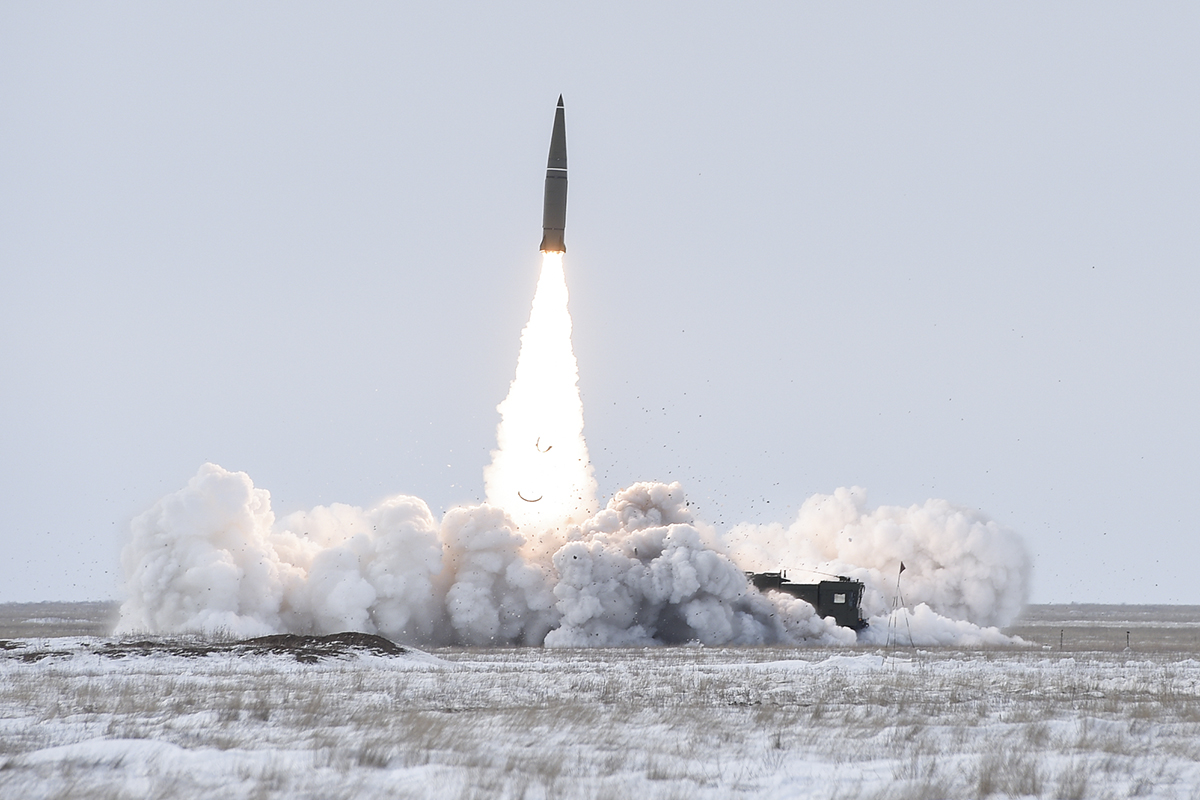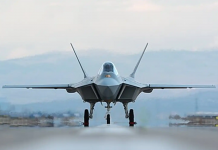
Earlier, several media outlets reported, citing a Russian Ministry of Defense source, that Russia already possesses the 9M730 Burevestnik (NATO reporting name: SSC-X-9 Skyfall]. Furthermore, the military department showed the workshop where these missiles are built.
The Burevestnik missile with a nuclear power plant operating on completely new physical principles is said to have a pulsating nuclear air-breathing engine, according to the declared characteristics. In addition, the missile has an extremely “special” warhead and a relatively unlimited flight range at a speed of Mach 0.9-1.0, with the ability to patrol specific areas before moving to the target on command.
It is also known that the missile flies too low to the patrol site – at an echelon of 30 to 60 metres – bypassing all lines of enemy air and missile defence, reducing its stealth and making interceptions impossible. This was stated directly by Russian President Vladimir Putin in his message to the Federal Assembly in 2018. Western experts agreed at the time that it was science fiction and “Putin’s cartoons.”
Today, however, US intelligence agencies are concerned about Russia’s combat-ready Burevestnik, having closely followed the latest Russian weapons tests.
START 3
Mr. Vladimir Putin announced the suspension of Russia’s participation in the Strategic Arms Reduction Treaty START-3 on February 21, during the announcement of the message to the Federal Assembly. He also revealed that he had previously signed a decree authorising the use of the most advanced land and sea-based strategic systems in combat.
According to a report by the US Congress, Russia currently has new “super killer” weapons across the country, including NATO-coded Skyfall Burevestnik missiles, according to India’s Wio News. The report also stated that the US Strategic Command has stated that it does not have such weapons and will not be able to develop one in the near future. As a result, continuing the previously signed START-3 agreement with Russia makes no sense, and a new agreement incorporating the most recent Russian strategic models will be required.
That is, Washington is already working on a new treaty that will benefit only the US and limit Russia’s options, according to Wio News. However, it appears that both the old and the new US START treaty are now covered with a “copper basin”.
US Secretary of State Anthony Blinken recently stated that the US regrets Russia’s decision on START and is ready to negotiate arms control with Russia at any time. But the question of whether Russia should even consider the White House proposal at this point remains unanswered.
Skyfall
There is still no clear understanding of how Skyfall’s propulsion system works. There is only one version, written in N+1 magazine, that is a gas-phase nuclear rocket engine with a working fluid of atmospheric air. Simply put, we’re talking about a small reactor whose controlled chain reaction heats the air flowing through the air intake and out the nozzle.
At the same time, the same air serves as a reactor cooling element. As a result, such a rocket can only “exist” during high-speed flight; without cooling, it will immediately melt the reactor.
According to nuclear technology expert Mr. Valentin Gibalov and military expert Mr. Alexander Goltz on radio Svoboda, “Burevestnik” most likely has a solid fuel engine to accelerate the rocket, after which the reactor is activated at a certain speed.
The international community is debating how much such a propulsion system will pollute the atmosphere. Burevestnik is expected to have a closed reactor, which means that the air does not come into direct contact with the reactor core, resulting in a very small radioactive footprint.
The Flying Chernobyl
Alexei Leonkov, a military expert from the Arsenal of the Fatherland magazine, describes the “Petrel” as a vengeance weapon. “Weapons that will be used after the intercontinental ballistic missile warheads “work out” on the aggressor’s territory. “Burevestnik” will complete the destruction of all objects of the aggressor country’s military and civil infrastructure, leaving it with no chance of survival,” Leonkov wrote for Rossiyskaya Gazeta.
Burevestnik may also have a navigation system at the field’s endpoints. Images of terrain objects along the flight path are stored in the product memory. At a certain point, the rocket “jumps” several hundred metres into the air and “inspects” the terrain. The navigation system then compares the “seen” to the established standard, according to Izvestia. Skyfall can avoid obstacles thanks to a terrain correction system for extreme points.
Until recently, there was no official confirmation that Russia had conducted Skyfall tests. The US claimed two years ago that the missile would not be ready until 2025. However, Russia is suspected of testing the missile in a number of incidents. For example, in 2019, a “mysterious explosion” was detected off Russia’s northern coast. However, several sources confirmed that Russia successfully tested the missile in 2020. Finland, Sweden, Norway, and the Netherlands’ intelligence confirmed this. Immediately following the tests, European intelligence reported elevated levels of iodine-131 isotopes. Furthermore, the intelligence services claimed that these isotopes were created artificially.





